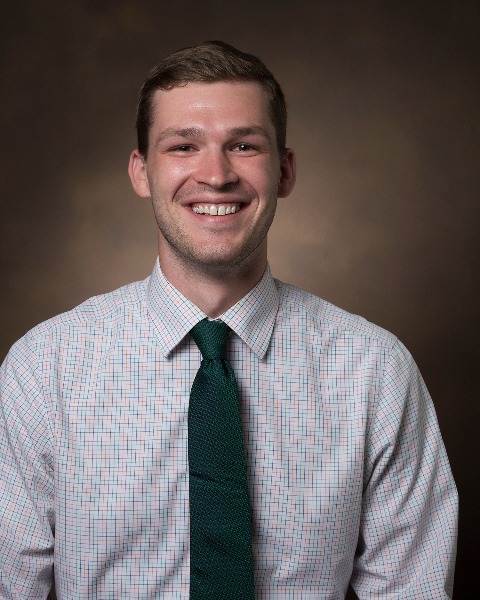Back
Poster, Podium & Video Sessions
Moderated Poster
MP22: Trauma/Reconstruction/Diversion: Urethral Reconstruction (including Stricture, Diverticulum) I
MP22-14: A Mixed Methods Approach to Exploring Patient Motivations for Delaying Definitive Treatment of Urethral Stricture Disease
Saturday, May 14, 2022
8:45 AM – 10:00 AM
Location: Room 228
Abimbola Ayangbesan*, George Koch, Helen Gambrah, Rohan Bhalla, Jackson Cabo, Stephen Hill, Niels Johnsen, Nashville, TN

George E. Koch, MD
Vanderbilt University Medical Center
Poster Presenter(s)
Introduction: Urethroplasty (UPL) for urethral stricture disease (USD) has high success and satisfaction rates, yet many patients trial endoscopic management with either dilation or urethrotomy. Access to care, surgeon expertise and counseling, and patient health literacy all play a role in the decision to defer UPL. Mixed methods research using both qualitative and quantitative data may allow for a more comprehensive understanding of patient's motivations to defer UPL. We hypothesize that decreased access to care and the logistical ease of endoscopic procedures will be associated with delayed UPL.
Methods: Retrospective review of our institutional UPL database was performed. Patients were categorized based on whether or not they had undergone at least two endoscopic procedures prior to UPL. Demographic data were collected, including median household income (MHI). Multivariable logistic regression using an a priori model was used to determine the odds of undergoing =2 prior endoscopic procedures. Telephone interviews were conducted with patients who had undergone =2 procedures in order to better understand their experiences and to identify motivations for delaying UPL.
Results: One hundred and five patients who underwent UPL from September 2019 to July 2021 were included in the study. Of these, 50 (47.6%) had previously undergone =2 endoscopic procedures (IQR 3-5), with 6 patients undergoing =10 procedures. On multivariable analysis, age at UPL (OR 1.03 [95% CI 1.01-1.06] p=0.02) and referral from non-teaching facility (OR 2.90 [95% CI 1.07-7.83] p=0.04) were predictors of delayed definitive treatment. Conversely, MHI >$100,000 was protective (OR 0.07 [95% CI 0.01-0.72] p=0.03). When interviewed, 83% of patients expressed a desire to have undergone UPL sooner and 61% were unaware of the lower success rates for repeated endoscopic treatments. Reasons for delaying UPL included not wanting to be admitted overnight due to being sole provider for family members, scheduling conflicts/times constraints, and fear of a more involved recovery.
Conclusions: Predictors of delayed definitive treatment included age and referral from non-teaching facility, while higher MHI was protective. Most patients who underwent multiple endoscopic procedures prior to UPL expressed a desire to have pursued definitive management sooner. Patients in the delayed group cited logistical issues with a more involved procedure, as well as fear of longer recovery. These results illustrate the need for improved patient counseling and access to care for urethral stricture patients.
Source of Funding: None
Methods: Retrospective review of our institutional UPL database was performed. Patients were categorized based on whether or not they had undergone at least two endoscopic procedures prior to UPL. Demographic data were collected, including median household income (MHI). Multivariable logistic regression using an a priori model was used to determine the odds of undergoing =2 prior endoscopic procedures. Telephone interviews were conducted with patients who had undergone =2 procedures in order to better understand their experiences and to identify motivations for delaying UPL.
Results: One hundred and five patients who underwent UPL from September 2019 to July 2021 were included in the study. Of these, 50 (47.6%) had previously undergone =2 endoscopic procedures (IQR 3-5), with 6 patients undergoing =10 procedures. On multivariable analysis, age at UPL (OR 1.03 [95% CI 1.01-1.06] p=0.02) and referral from non-teaching facility (OR 2.90 [95% CI 1.07-7.83] p=0.04) were predictors of delayed definitive treatment. Conversely, MHI >$100,000 was protective (OR 0.07 [95% CI 0.01-0.72] p=0.03). When interviewed, 83% of patients expressed a desire to have undergone UPL sooner and 61% were unaware of the lower success rates for repeated endoscopic treatments. Reasons for delaying UPL included not wanting to be admitted overnight due to being sole provider for family members, scheduling conflicts/times constraints, and fear of a more involved recovery.
Conclusions: Predictors of delayed definitive treatment included age and referral from non-teaching facility, while higher MHI was protective. Most patients who underwent multiple endoscopic procedures prior to UPL expressed a desire to have pursued definitive management sooner. Patients in the delayed group cited logistical issues with a more involved procedure, as well as fear of longer recovery. These results illustrate the need for improved patient counseling and access to care for urethral stricture patients.
Source of Funding: None

.jpg)
.jpg)